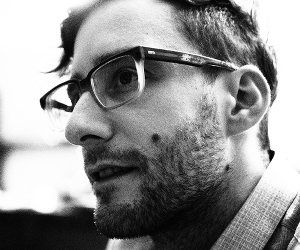Master Class
Closing gaps with the Jobs-to-be-done-framework
Thursday, April 30
15:15 – 16:45
Room 1
Thomas Hütter
Systems Designer, HERE Germany
Anja Riedelsheimer
User Experience Designer, HERE Germany
Brief
As part of a change in overall strategy of the 6000+ employee company HERE, the consumer product organization was tasked to reinvent itself. Multiple scrum teams with varying processes, practices and language were shuffled together to develop both product and platform. The core challenge has been to close gaps between business, marketing, design and engineering departments, grow a sustainable culture around user-centered design and catering for Design requirements end-2-end.
Preparation
Differences in practices, processes and language became a bottleneck quickly. As Designers in a horizontal group we had the luxury to observe the organization and its systems, analyze and identify the antipatterns and propose a comprehensive framework tailored to the specific environment. We drove our analysis bottom up starting where problems were the most visible and worked backward along the product development timeline and upward through organizational hierarchies. This involved hands-on activities to reflect user stories in information architectures as well as following user research studies that informed the initial product brief. What appeared as a communication issue amongst engineering- and design groups in the beginning was later found to be true amongst all involved departments. It was apparent for us that what was essentially missing was an overarching dialog catalyzer spanning across portfolio management, product definition, product development and product validation.
Concept
Informed by Clay Christensen's theories as well as other subsequent concepts from the design community we developed the "Job-to-be-done Framework". At its core, it provides a set of modular building blocks that can be combined to formulate coherences between departments. It is more than a simple design tool, as it extends to the pre-design, product definition, development and qualitative & quantitative research as a golden thread. The framework ultimately fosters an outcome driven dialog in a large group of people and their departments to help reach a common understanding of the problems they are trying to solve, how to tackle those problems together and learn from the implementation. Problem hypothesizes are based on “the jobs that users need to get done†and presented in a specific structure: When "I Want" So I Can. In changing situations, users have changing goals that influence their needs. Business objectives and propositions can be hooked into these building blocks connecting the hypothesizes to the organizational strategy. Feature descriptions and performance metrics can be connected to tie everyday tasks to the proposition.
Impact
The "Jobs-to-be-done Framework" has vastly contributed to the setup of a new ecosystem in product development that leveraged collaborative dialog in distributed teams, tied big innovation to production and generated new roles in design and new techniques in various units such as product management and user research. To change culture we had to implement the framework bottom-up by conducting iterative workshops and being proactive in everyday consulting. Over the timespan of about 1 year we had implemented the framework in collaboration as an interactive and applied tool in which all the involved groups would input information and receive value. Impact wasn't explicitly measured.

